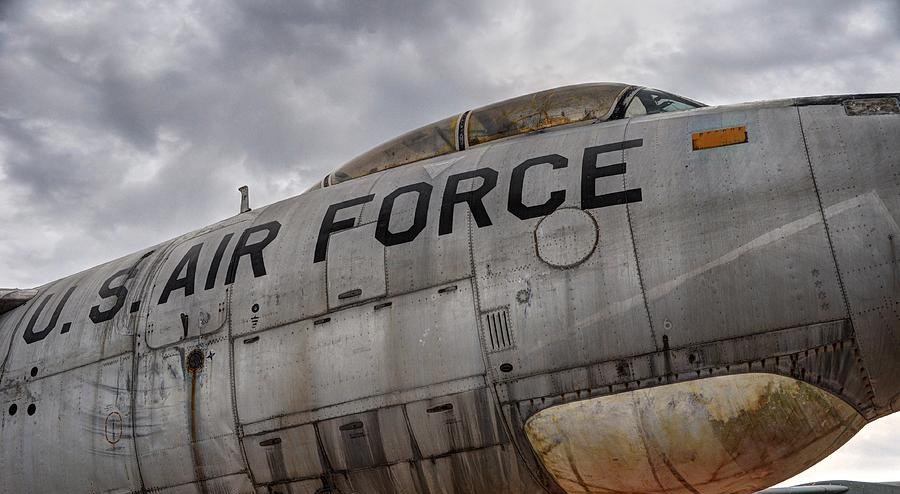by George Landrith • American Military News
 The U.S. military’s control of the battlefield airspace has become so routine it is now taken for granted. Consider that the last time any American soldier or Marine came under attack from an enemy aircraft was during the Korean War, which ended almost 63 years ago. But U.S. domination of the skies – and protection of U.S. troops on the ground – can no longer be assured. In recent years, countries like Russia and China have upgraded their capabilities while our Air Force has been stiffed for funds needed to recapitalize its aging air fleet.
The U.S. military’s control of the battlefield airspace has become so routine it is now taken for granted. Consider that the last time any American soldier or Marine came under attack from an enemy aircraft was during the Korean War, which ended almost 63 years ago. But U.S. domination of the skies – and protection of U.S. troops on the ground – can no longer be assured. In recent years, countries like Russia and China have upgraded their capabilities while our Air Force has been stiffed for funds needed to recapitalize its aging air fleet.
The advanced ages of America’s fighter, bomber, and refueling tanker fleets have received the most political and media attention and are being addressed, albeit belatedly, by major (and very expensive) modernization programs. Less visible are the air systems that present U.S. commanders with a full battlefield picture, provide the ability to identify and track enemy movements, and thwart enemy attacks on our troops in advance through electronic means.
Yet these aircraft are also being flown well past their expected retirement date. The AWACs early warning system – famous for its massive rotating radar dome – and JSTARS — which tracks ground vehicles and some aircraft, collects imagery, and relays tactical pictures to U.S. commanders — are both based on converted Boeing 707s – a passenger jet developed in the 1950s. The “Compass Call” electronic attack aircraft that jams enemy communications first went operational during Ronald Reagan’s first term – before many of its’ current pilots were even born.
And while these aircraft have been modernized over the years through new parts and software, at a certain point the continued wear and tear on airframes that should have been retired long ago will start to pose an increasingly unacceptable risk – to the crews inside the planes as well as the troops and commanders relying on their support.
So the case for recapitalizing these critical military assets is straightforward. Less certain is what approach the Defense Department will take, and Congress will permit. The recent history of military modernization programs – in which repeated delays and cost overruns have crippled, if not doomed, a number of new weapons systems – is not a happy one. So at a time of still-tight defense budgets, it is imperative that the Air Force find an affordable and effective solution to replace early warning, tracking, and electronic attack aircraft that might otherwise fall through the cracks of Pentagon budgeters and Congressional overseers alike.
First, as a matter of practice and principle, the Pentagon should not attempt, nor should Congress permit, rushing towards awarding a sole-source contract for the purposes of avoiding competition and scrutiny. If history is a guide, the aircraft replacing the current AWACS, JSTARS, and Compass Call systems will still be flying when their current pilots become eligible for social security. So we need to get this decision right the first time, which entails a number of considerations.
For example, for aircraft that are not ‘tactical’ and do not fly over hostile territory or require the ability to evade enemy attack, it doesn’t makes sense to pay for developing a new military airplane from scratch when a number of commercial jets could be converted to do the job. Commercial variants also have the advantage of being sustained in large part by a massive global maintenance network that keeps thousands of airliners flying every day. Tapping into commercial economies of scale could dramatically reduce support costs over time – an advantage enhanced if the replacements are all based on one widely-used airplane.
Furthermore, while advances in computing means that some new planes can be smaller than the aircraft they are replacing (and require less crew), Congress must also ensure that the Defense Department doesn’t succumb to penny-wise, pound-foolish thinking that has not served the country well in the past. The new aircraft – whether for AWACS, JSTARS, or Compass Call – must be big enough and flexible to absorb growth in equipment, personnel and missions that may be required in the future by our military.
In an era of sequestration – when spending on military procurement, research, and development has declined steadily in real terms over the past five years – it is all too easy to go cheap and small. But this would shortchange the potential needs of theater commanders charged with executing real world missions against increasingly agile and adaptive adversaries. Our fighting men and women deserve better than short-term thinking that won’t stand the test of time.
Along with other long-overdue modernization of key air, sea, and ground systems, an affordable and well-conceived replacement program for the Air Force’s early warning, battle management, and electronic attack fleet will help ensure that future generations of U.S. troops can look to the skies with nothing to hide from – and nothing to fear.